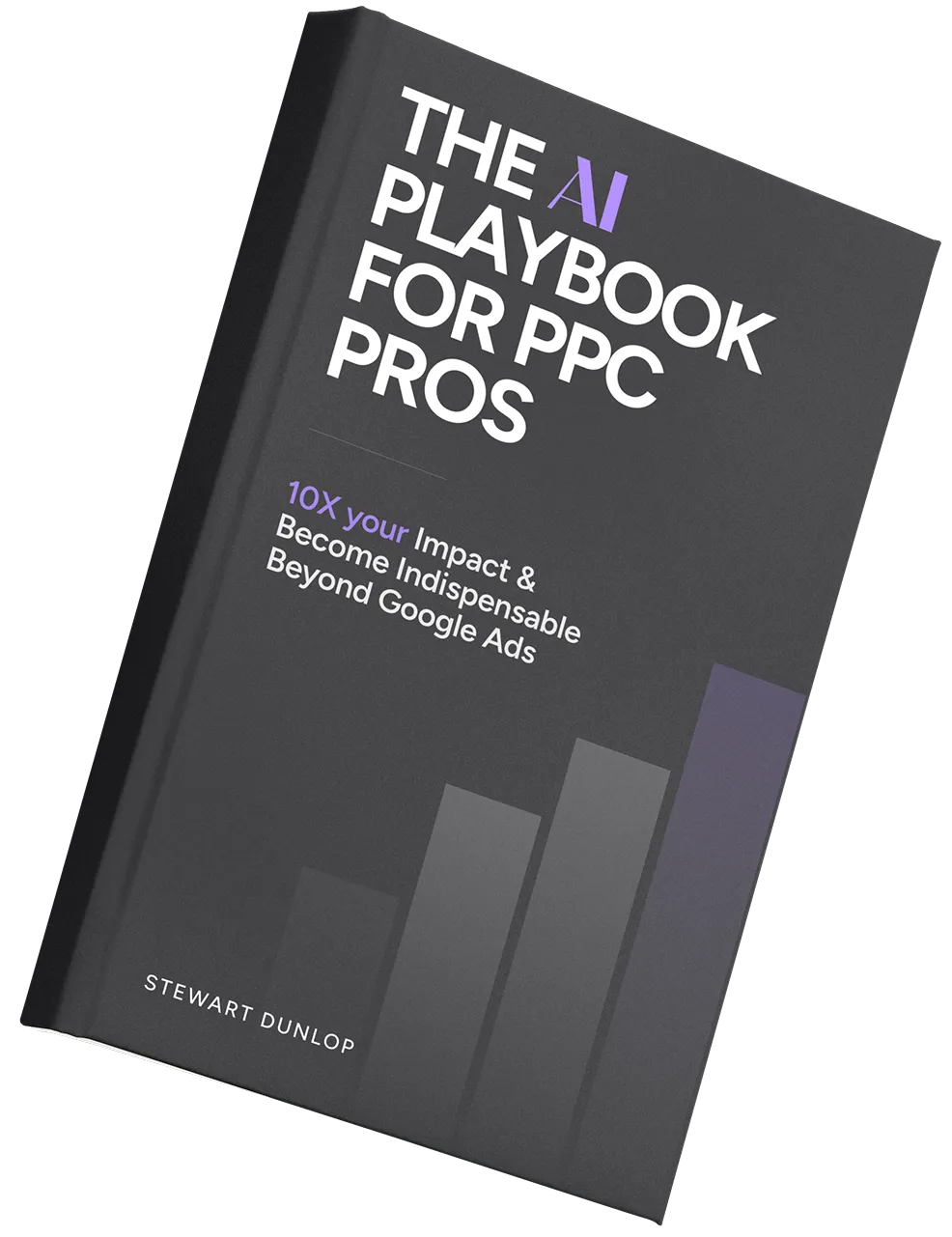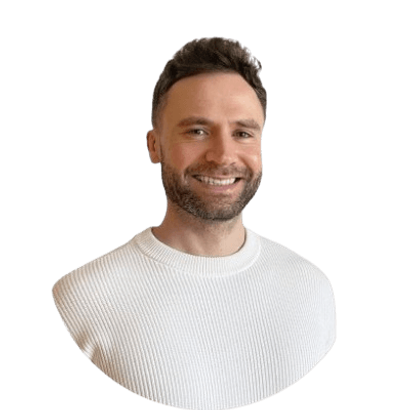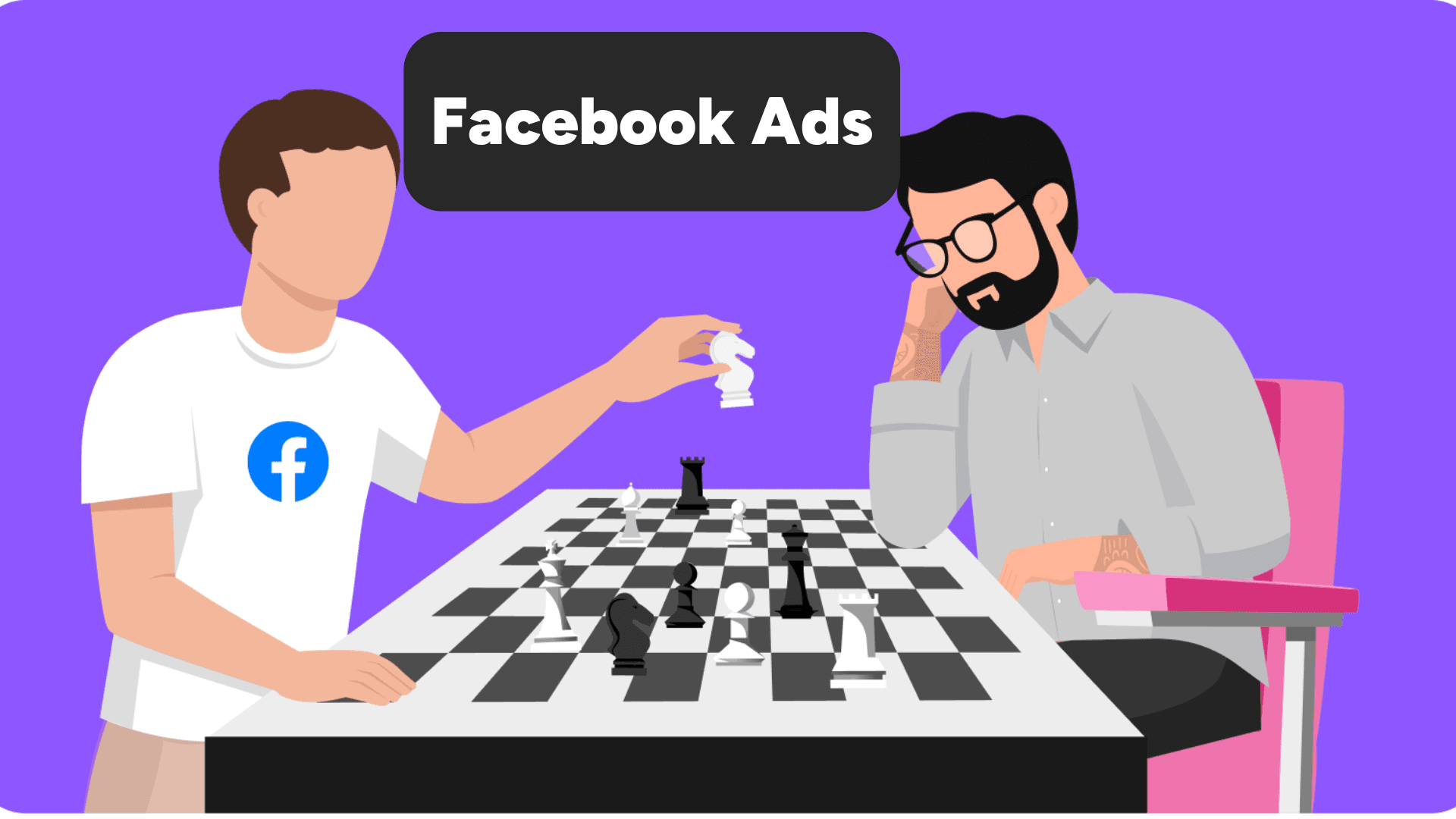
Facebook PPC ads can help businesses increase sales and build brand awareness. But it’s not easy to run an effective campaign—costs fluctuate and ads often stop working. Achieving a positive return can be challenging.
Last year was particularly challenging. Economic changes brought on by coronavirus meant that businesses had to adapt to new conditions quickly. Despite this, top digital marketers found innovative solutions to achieve success.
This article will explore some of the best-performing Facebook ad strategies we use at to run profitable Facebook ads for clients.
Connect Facebook Ads to AI
It's now possible to connect your Facebook ads data directly to AI via MCP.
This allows you to chat directly with your Facebook ads account, and get responses from Claude AI, which has access to your entire ad account history.
1. Target the Most Profitable Customer Avatars
Most businesses have several customer avatars they target their product or service at.
Narrowing these down to the most profitable ones is an effective way to generate the best possible Return On Ad Spend (ROAS).
Imagine a protein powder brand with the following customer avatars:
- People starting to work out.
- Those who want to lose weight.
- Dedicated weightlifters who have been working out for years.
The brand may struggle to generate a positive ROAS when targeting the first two avatars due to the lower lifetime customer value. These people may not continue to buy the product after initial motivation wears off.
But the third customer profile may be extremely profitable, as the weightlifters will buy the powder for years.
Of course, this is just an example. The company may find that the first two groups’ initial enthusiasm leads them to have large average order values, making them highly profitable.
For a more in-depth look at this marketing strategy, check out episode 283 of the Perpetual Traffic podcast.
2. Always Challenge Your Assumptions
Always challenge assumptions about who buys your product. This is especially important if you created your customer avatars a long time ago and haven’t updated them.
You need to check that the people you are targeting your ads at are the people who are buying your product.
Let’s go back to the example of the customer avatars from the protein powder brand.
The company may look at the data and discover that dedicated weightlifters who have been working out for years don’t buy their product due to loyalty to an existing brand.
They may decide to stop targeting this group. Or they could switch up their strategy to highlight the benefits of their products over other protein powder brands.
3. Effective Facebook PPC Strategies Are Constantly Changing
We’ve all seen online advertisements describing miracle investments or lucrative work-from-home strategies.
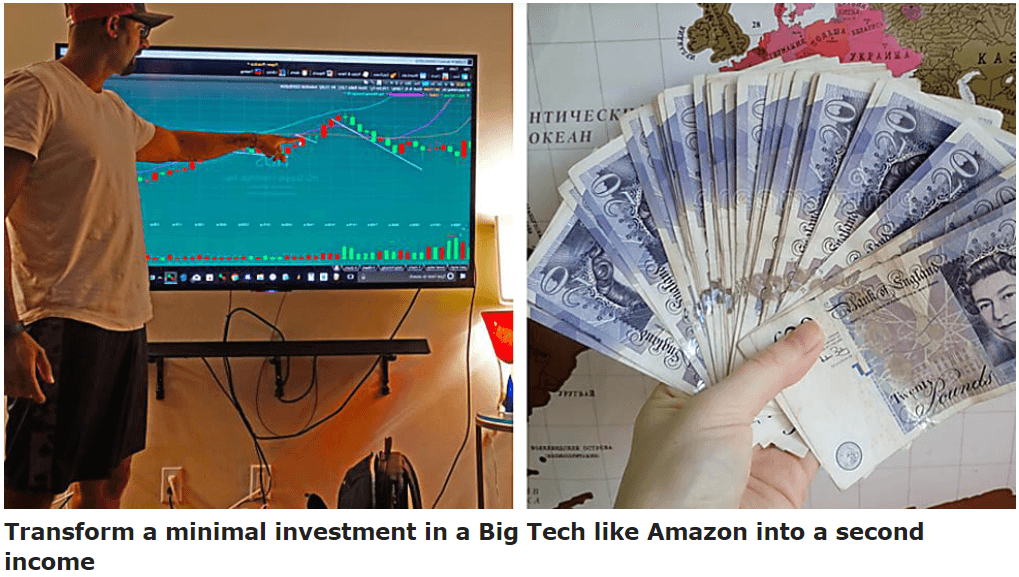
These should seem like incredible offers that we can’t wait to take up. Who wouldn’t want to transform a minimal investment into a second income like in the image above?
But no one believes these ads because we’ve all seen them before.
A similar thing can happen to your Facebook ads.
They lose effectiveness over time as your target audience becomes less receptive to the tactics you use in your ads.
For example, a reduced click-through rate could suggest that people no longer respond well to your adverts. Or a lower conversion rate may indicate that your audience no longer finds the offer as appealing.
4. You Don’t Have to Start from Scratch
When ads stop working, it can be tempting to start over. But it isn’t always necessary to create a new ad. Adjusting the messaging of an ad or the structure of a campaign can have a significant impact.
The ad from Diggity Marketing below encourages people to download an SEO case study they can use to increase site traffic.
It’s an attractive offer for the ad’s target audience of website owners.
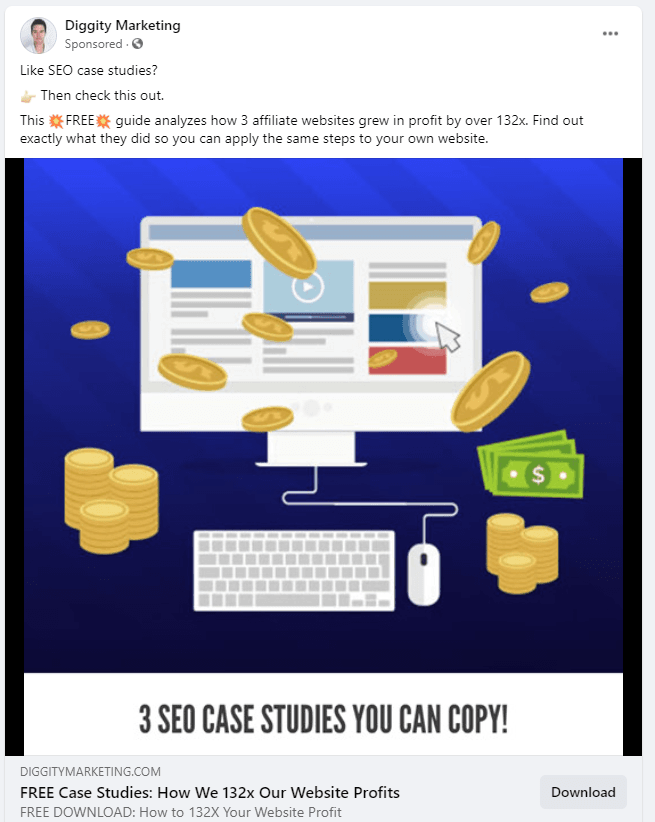
But there are many reasons why this ad may stop working eventually: people may see the ad repeatedly and get bored, or competitors may come in with a similar offer.
The good news is Diggity Marketing has many options for how it could switch up the Facebook advertising campaign:
- It could keep the case study offer but change the messaging, for example, by adding specific revenue figures to the ad or turning it into a “How to” offer.
- They could swap the case study for another existing offer. This is a good strategy if you have already invested in content marketing and have a library of resources you could use.
- It could package the same information into a pre-recorded webinar or a free online course and use this as the ad’s offer. This is an easy switch that might appeal to people who prefer video learning.
The third choice is pretty much exactly what Diggity Marketing did. The ad below shows that the offer has changed from downloadable case studies to free training that will help users create affiliate sites.
The free training likely contains some of the same information found in the downloadable guides, but it is displayed differently.
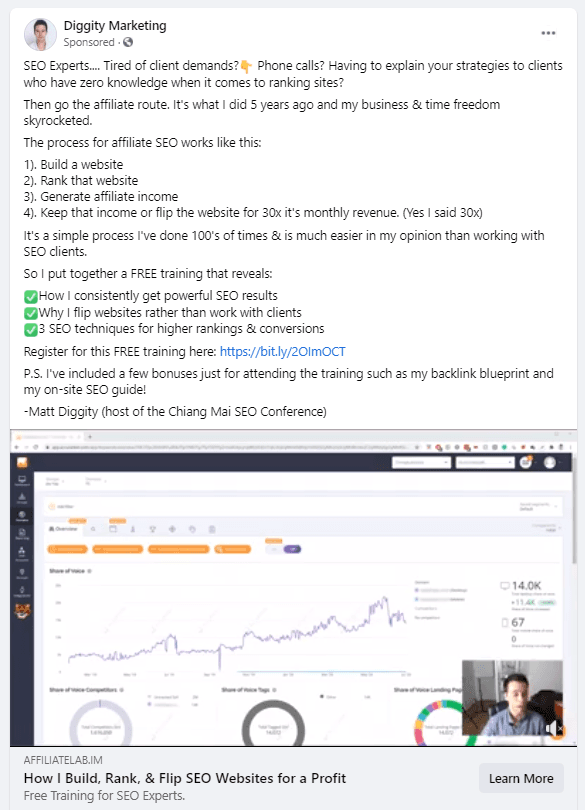
5. Show Customers Facebook Ads at the Right Time
The time you choose to run ads can have an impact on your Facebook advertising success rate. You need to show the right ad at the right time.
First, consider when your target audience is online. If you already have data on this, you can set your campaign to only run at these times. You’ll have to gather it first if you are new to Facebook ads.
At PPC.io, we like to schedule our ads to run 24/7 when we start and then scale the promotion back to focus on the most effective times.
The timing of different parts of a campaign is also important. Facebook provides multiple options for when people see your campaign, and posts can be scheduled to reflect people’s previous interactions with your content.
Companies with a short sales cycle can target their ads to customers who have visited the website in the last 15 to 30 days. Those raising brand awareness among B2B buyers can choose a longer time frame.
If a prospect added your product to their shopping basket but failed to checkout, you’ll benefit from hitting them with PPC ads as soon as possible. This push may be all they need to make the purchase.
But if they just clicked on a top-of-funnel blog post or interacted with a product introduction video, they may not be ready to buy yet.
6. Consider Seasonality
The time of year that you run Facebook advertising is important. Doing so when your target audience has strong buying intent can improve ROAS—even if competition means the cost per click is higher.
Many retailers run ads towards the end of the year as they know consumers buy presents for people during the holiday season.
But a B2B provider may have less success at this time of year as yearly budgets are running out and companies are thinking about winding down before the break.
Many other seasonal factors can affect sales. Online card retailer Thortful knows this and shows its ads before Mother’s Day and Father’s Day.
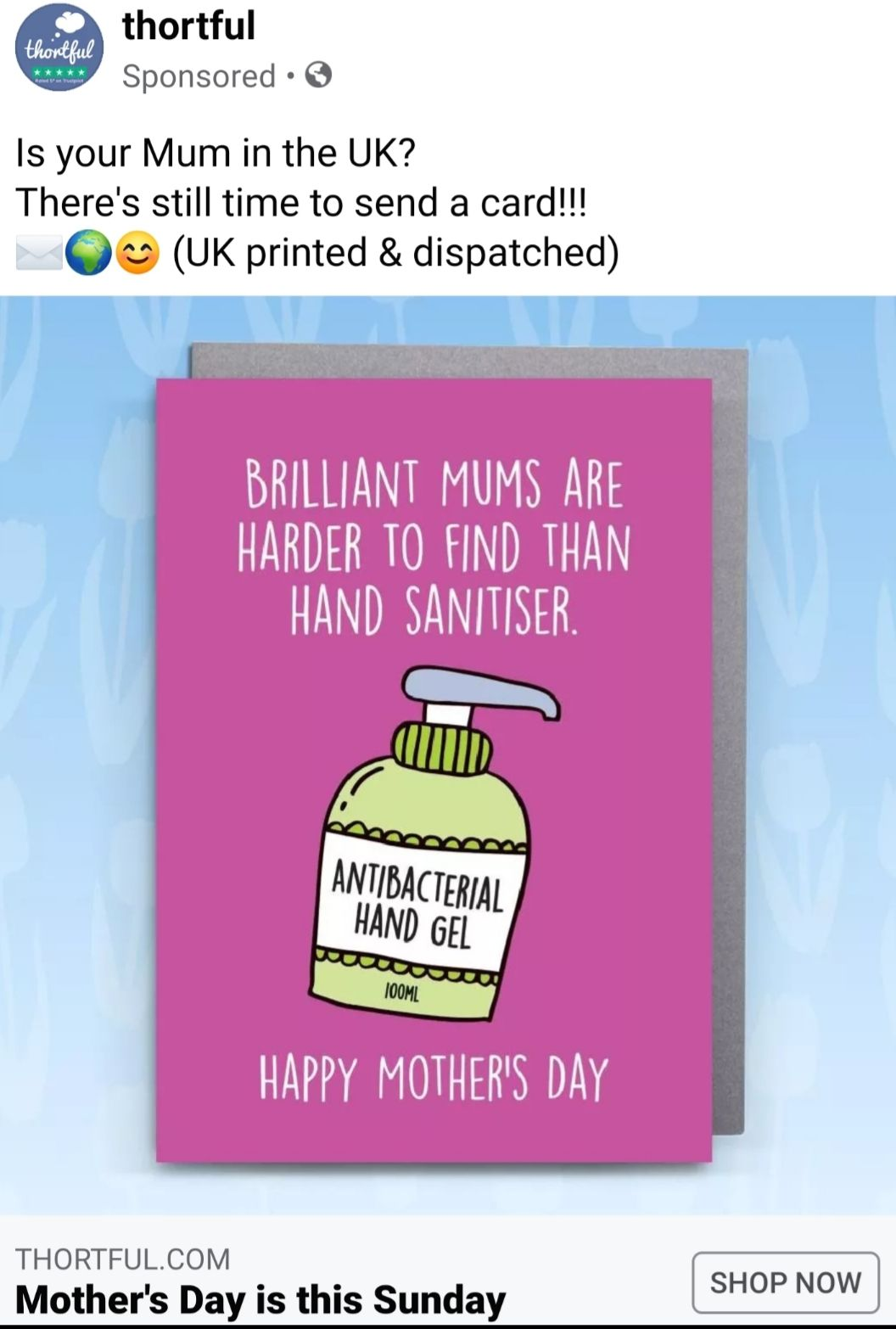
Even if you run ads all year round, you can still tailor your offer depending on the time of year. Promote seasonal sales or take advantage of relevant festivals or holidays.
Take a moment to think about when customers are most likely to need your product and plan your ads accordingly
7. Keep an Eye on External Factors
2020 wasn’t a typical year. Many external factors significantly impacted pay-per-click ad prices and the ability to get a positive ROAS.
In March, the COVID-19 crisis saw brands reduce ad spend, bringing cost-per-click prices down by 15% to 20% compared to February. The lower prices meant companies that kept running ads had more margin for error.
The crisis affected products in different ways—and therefore, the effectiveness of ads. Sales of sweatpants and outdoor wear surged, but formalwear sales declined as people working from home no longer had to dress for the office.
COVID-19 wasn’t the only external factor that affected Facebook PPC. Ad prices rose during the 2020 U.S. presidential election as well-funded political campaigns flooded Facebook with their ads.
Knowing which factors will affect your campaign is tough, but there are a couple of things you can do:
- Monitor your overall sales. Are sales at your business rising unexpectedly? If so, consider whether any external factors that could be contributing. Create an ad campaign to take advantage of those external factors.
- Review sales of individual items. If one product has seen a rise in sales, it could be due to external factors. Consider creating ads promoting these particular items.
8. Optimize Your Facebook Ad Images
When creating pay-per-click ads, it can be tempting to focus your efforts on the campaign’s technical elements and treat the content as an afterthought.
But content can significantly impact the effectiveness of your Facebook advertising campaign.
The ad creatives you use are critical. Create a Facebook ad that matches your overall brand identity, so people instantly recognize it as yours. This is especially important when your target audience is people who have already interacted with your content.
Check out how the ad from Chili Piper below matches the colors, font, and logo used on the landing page. It’s instantly recognizable to people familiar with the brand.
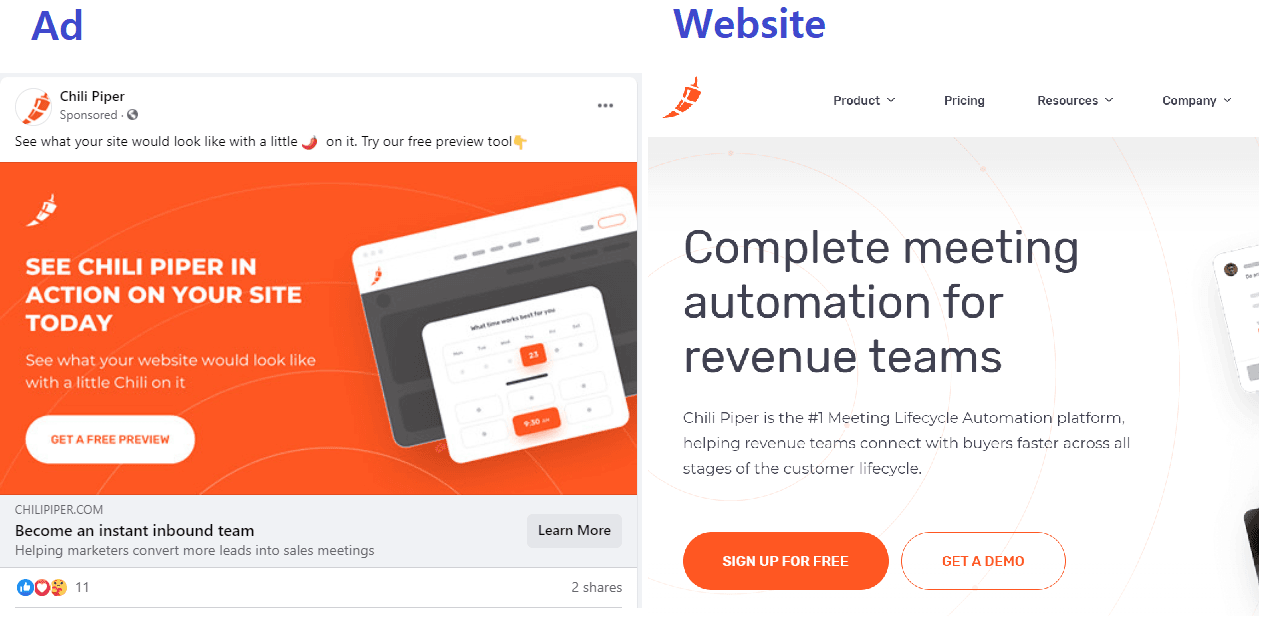
Likewise, if you plan to show a product carousel, choose the images that show your product in the best possible light. Metrixlab found that optimized images can increase sales by 10% to 30%.
9. Optimize Your Ad Copy
Creating excellent copy is essential to ensuring your ads get conversions. The text, headline, and call-to-action all work together to influence your ad’s effectiveness.
One of the best strategies you can use when starting is to consider the dream or nightmare outcome for the people you are targeting. Then show how your product can help them achieve or avoid these scenarios.
The ad below from workout app Freeletics shows dream scenario copywriting with the phrase “I’m getting fit with just 15 minutes a day.”
If you’re struggling to get in shape, this is exactly what you want to hear.
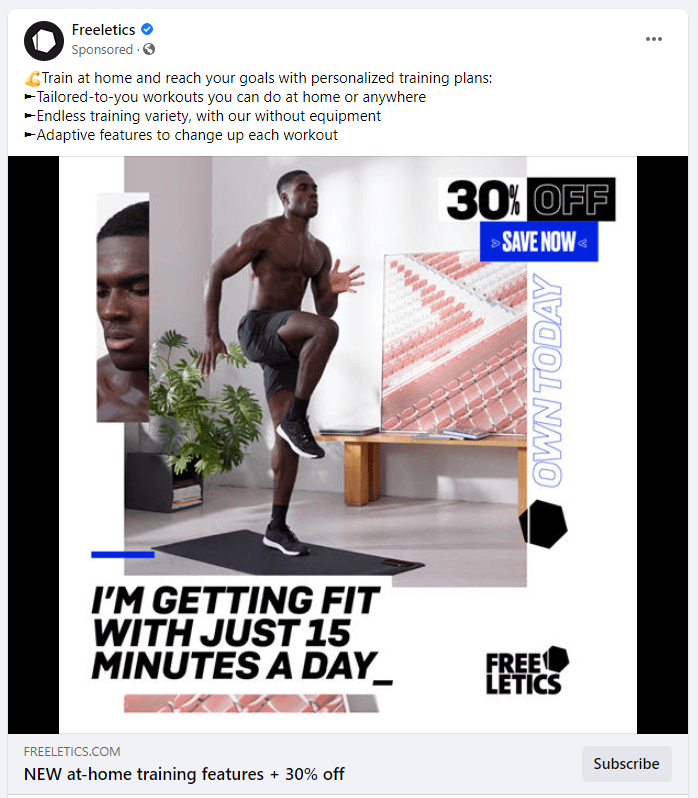
This ad from Fiverr also works well. It promises that people who use the service will be able to find “freelancers who will bring your business to the top of the search results.”
It’s a simple statement, but it has lots of appeal for website owners looking for more traffic.
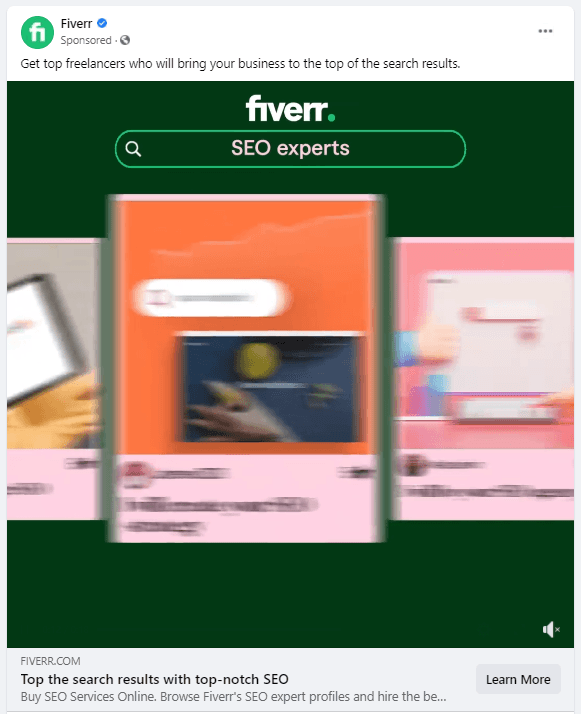
10. Run PPC A/B Tests to See What Works
Optimizing Facebook ads is great in theory, but how do you know what works?
The trick is to use A/B testing to see what is effective. Run different versions of your ad to see which ones perform better.
Start with a wide net and then begin to narrow it down. For example, you could test an ad with long-form copy against one with just a sentence of text. Find out which one performs better and then use that format.
You can then experiment with different wording or images to see if you can improve conversion further.
The idea is to continually test and refine your PPC campaign until you have a formula that works.
There are several things you should do to ensure your A/B testing is adequate. Here are some of them:
- Only change one element of an ad in each test. Changing multiple factors means you won’t know which change caused the better results.
- Run the ads for long enough to get significant results. Otherwise, single conversions can have a substantial impact on your results. Facebook recommends you run tests for at least four days.
- Use the same audience for all variations of the ad.
You can also use any previous test data to influence future campaigns.
11. Ensure User Experience Continuity
Have you ever clicked a Facebook ad only to be taken to a page that shows the product is sold out? It’s a waste of the user’s time and a waste of the company’s online advertising budget.
Another Facebook ad annoyance is when you click on an offer but land on a general page, with the relevant content hidden at the bottom.
It’s essential to direct customers to a page that is relevant to the ad they clicked.
To do so, create landing pages for all offers in your PPC campaign. Ensure that the customer sees a headline or image detailing the next step. Then deliver on the promise the ad made.
Below is a perfect example of this in action from Freshbooks:
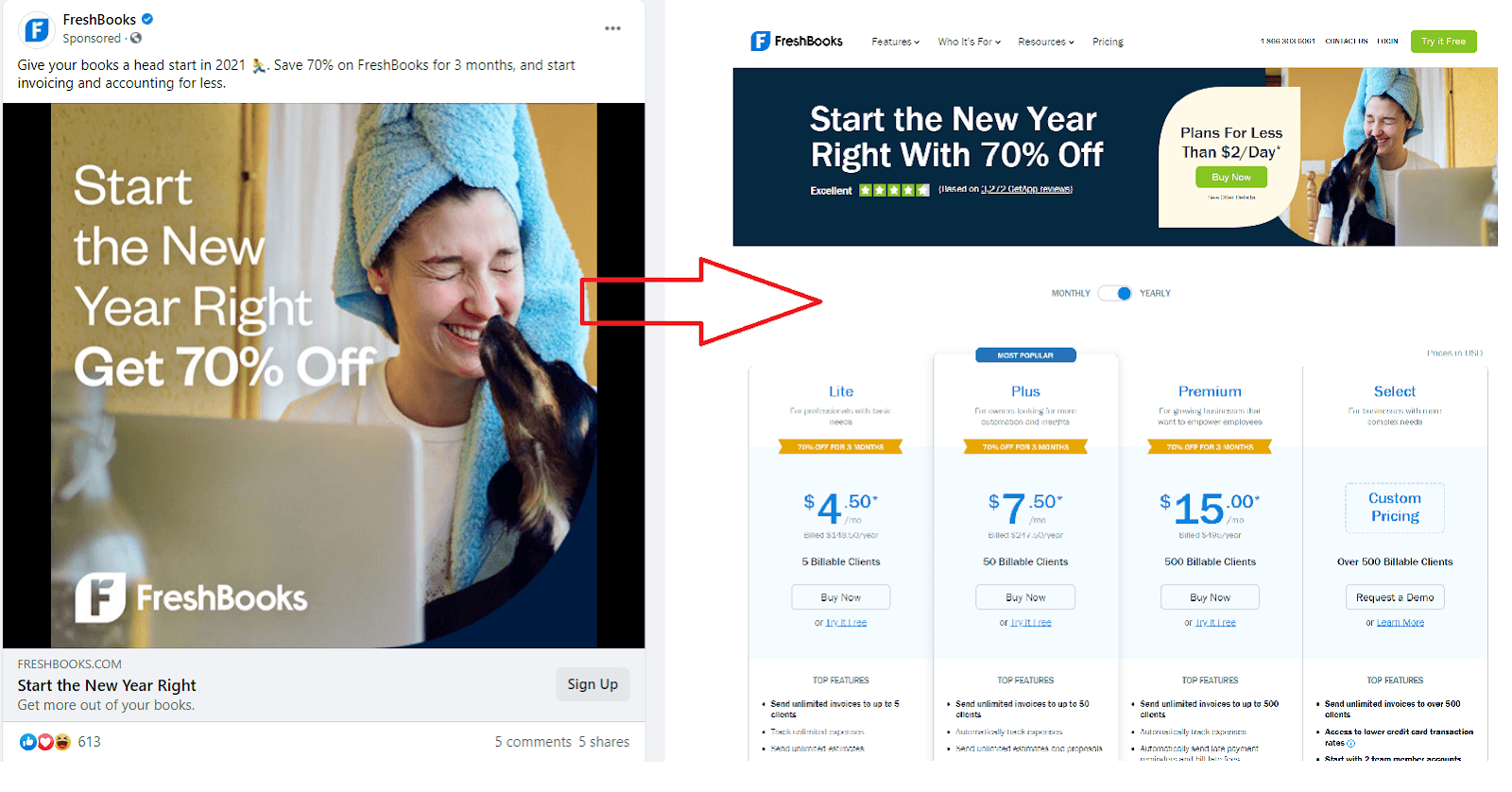
The Facebook ad and landing page uses the same image, color scheme, and wording. The offer is the same one the company promoted on Facebook.
12. Discover Offers People Love
You can target a perfectly composed Facebook ad at a specific audience, but you won’t convert if the offer isn’t appealing.
Consider experimenting with different offers if you don’t see the results you want from your PPC campaign.
Here’s how this could work for different types of campaigns.
Lead Generation
Companies that want to generate leads should look at their existing customer data to identify resources people love.
Look for the blog posts that get the most views or the downloadable resources people always sign up for. Either use these in your campaign or repurpose them into new types of content.
eCommerce
An eCommerce store could experiment with the products it promotes in its ads. Create ads featuring different best sellers and see which ones get the most conversions. We do this within our eCommerce PPC offering.
Subscription Services
Subscription services could experiment with different ways of promoting their product. For example, free trials, money-back guarantees, discounts on long-term plans, or limited-time offers.
Whichever type of campaign you run, be sure to test multiple offers and keep track of which ones are effective. As you collect data about what works, you can begin to focus on the ones that produce the best results.
13. Create a Sense of Urgency
Once you have offers people love, you need to make them irresistible in your Facebook ads.
Creating a sense of urgency is a great way to encourage people to buy. It’s a tactic that is often used in PPC ads and general advertising and sales. Think about all the adverts you’ve seen with copy like “sale ending soon” or “while stocks last.”
There are many ways you can create a sense of urgency in your PPC ad. Here are a few:
- Offer a limited-time discount.
- Mention that you have limited stocks of the relevant product.
- Open your course for a short time.
- Promote webinars that require people to sign up by a specific date.
- Offer a discount to the first 50 people who sign up.
This ad from Doodly mentions that the offer will only last for a short time.
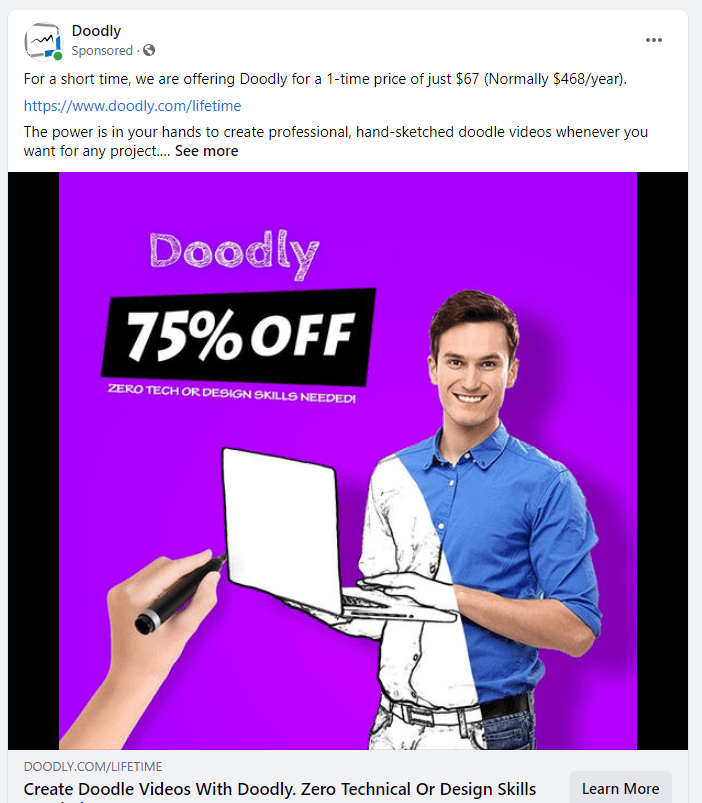
14. Track Your Pay-Per-Click Campaign’s Effect on Sales
When running a pay-per-click campaign, it’s essential to track how people interact with your business throughout your funnel.
Imagine you run an ad campaign with a higher than average sign-up rate for your free offer.
This is a good start, but if the new customers who sign up for the offer don’t convert into buyers later down the line, you’re throwing money away.
You may be better off adjusting your ads to target a group of people who are less likely to sign up for the free offer but end up spending more in the long run.
You can use Facebook Pixel to track leads as they move through your sales funnel. By creating landing pages for each offer you produce, you’ll be able to attribute sales to different offers.
The Key to an Effective Facebook PPC Campaign Is Optimization
It’s essential to monitor your Facebook ad campaign and take steps to optimize it where necessary. This ensures you always get the maximum results for your ad spend.
If you’d rather an expert do this for you, we can help. At PPC.io, we help ambitious brands grow their leads, customers, and profits through effective PPC campaigns. Contact us here to find out how we can help.
